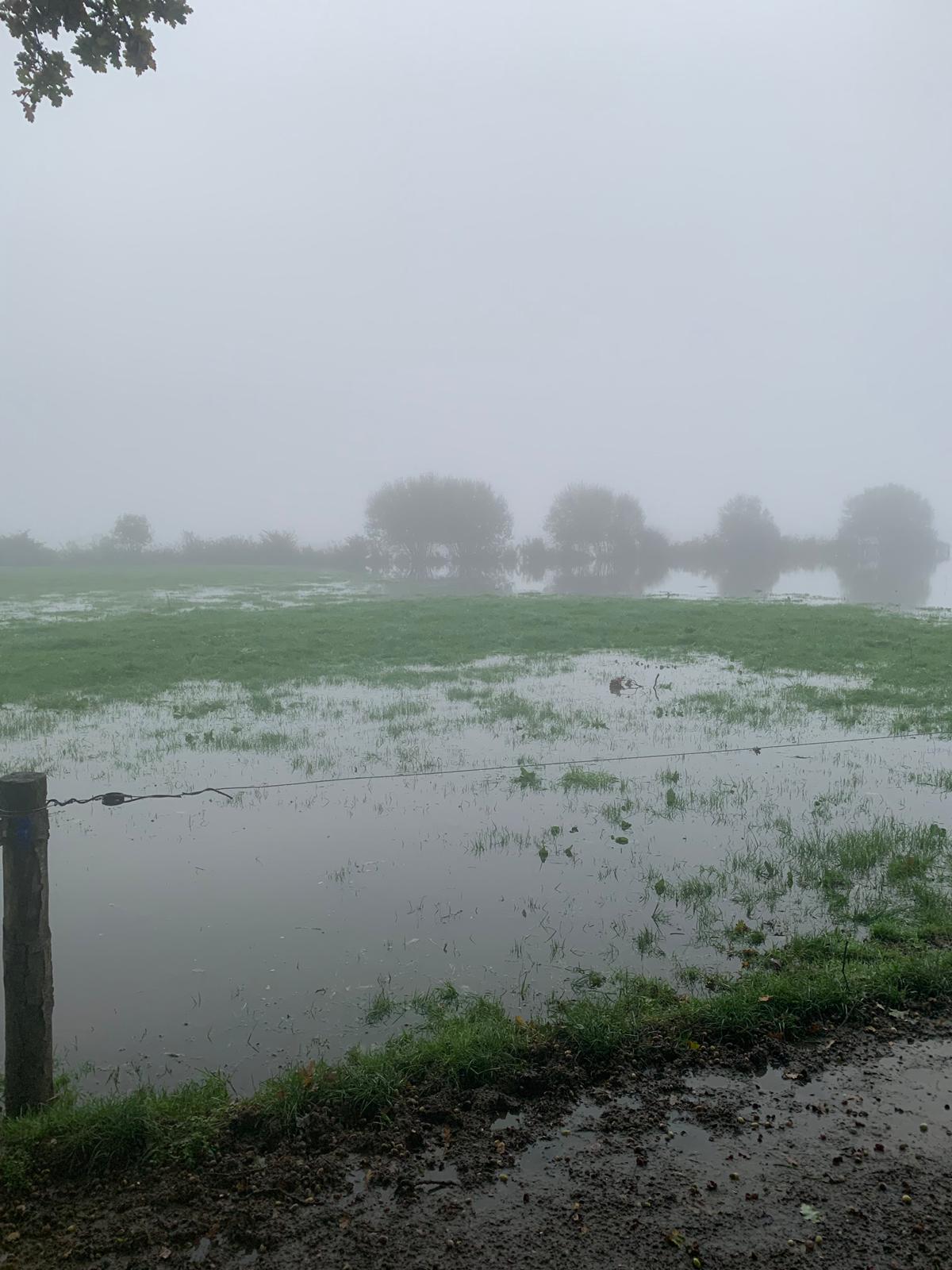Dealing with flooded pastures
Friday, 13 March 2020
Assessing the sward, soil and infrastructure after flooding will be key to getting grazing and silage areas growing in 2020.
Assess the sward
Once floodwaters have receded and when it is safe to do so, walk the pastures to assess the levels of sown species remaining. If there is less than 60% of sown species in the sward, reseeding is required. Be mindful of sediment deposits on the sward. If these are more than 5 cm deep, rye-grass is unlikely to push through. A set of chain harrows could be used to break up these deposits if ground conditions are suitable.
Watch our assessing whether to reseed video
Soil test
Add any flooded areas to the list of fields to be soil-sampled this spring. Sediments carried by flood waters can be a lucky dip. Fine silt and clay deposits can often be rich in nutrients; however, sediments can also carry trace elements and heavy metals, which can be problematic. In addition, readily mobile nutrients, such as nitrogen and sulphur, will have been leached from the soil profile, leaving plants devoid of nutrients for the growing season.
List of soil testing companies
Assess soil structure
Flooding can cause a variety of physical, biological and chemical changes within the soil – all of which can affect soil structure. Although many of these changes will start to reverse once the soil begins to dry out, it is important to assess soil structure on any flooded fields before grazing or travelling with machinery. Soil structural assessment can be done with our Visual evaluation of soil structure (VESS) soil quality scoring system.
Watch out for weeds
Flood waters can introduce new weed species to pasture; thin, slow-recovering pastures and bare soils will provide a good opportunity for weeds to generate. Carefully monitor pastures throughout the spring and tackle any weeds before they seed to avoid any long-term weed infestations.
Find out more about weeds and improving your pasture with the BRP manual.



